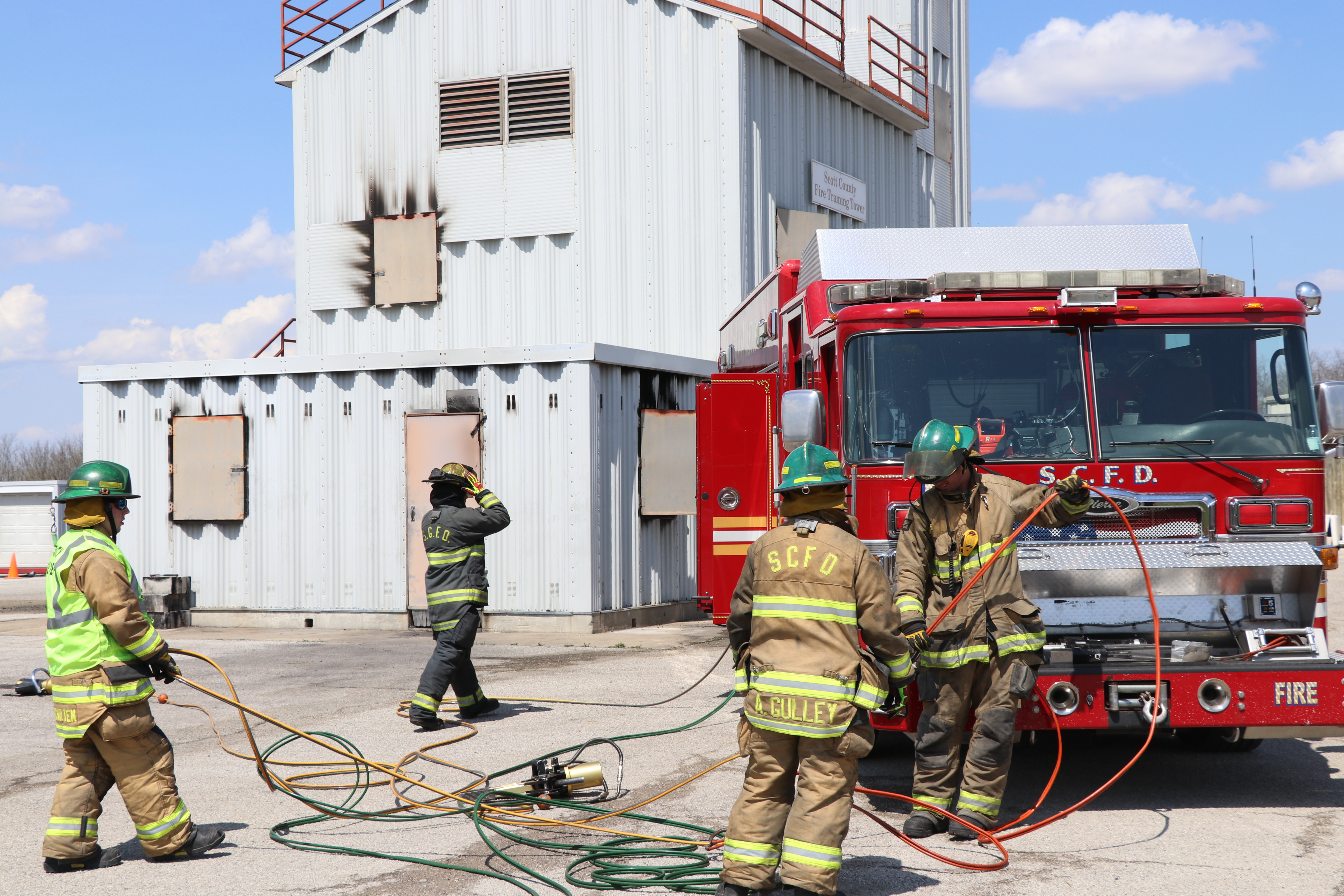To Hell and Back
What is firefighter training like? At the Scott County Fire Department, the final day of recruit training is the recruit’s longest day, appropriately nicknamed Hell Day. The recruits have a 24-hour shift where they run through a series of real-life scenarios in order to give them an idea of what being a firefighter is really like. It takes place at the Scott County Fire Department Training Grounds, where 2 primary trainers and a number of assisting trainers put them through mock drills made to simulate real life situations. The recruits will do everything from mock medical runs, mock 10-46’s, structure fires, and search and rescue scenarios.
According to Captain Waller, “We throw everything at them that we can, just to get them prepared so they know what’s coming. They don’t quite understand until after tonight that tired, hungry, wet, cold – it doesn’t matter, you still have to make the run.” These recruits have to find it deep inside themselves to get up and go, to do it whether they want to or not, no matter what the weather is or what time it is.
The recruits get a really good idea of what the job actually entails, and they get to do it in a very controlled setting. The recruits can see what being a firefighter is all about and the trainers get a good idea as to how effective the recruit training was by watching and observing each scenario. The recruits have to make a lot of decisions on their own, with a lot of trained eyes on them. All the trainers are there to make sure they don’t hurt themselves or damage any of the equipment. The recruits get to make a lot of mistakes that are real world scenario-based which they can then take and learn from.
For the recruits it is a right of passage. 24 hours of scenarios that test their knowledge, skill and determination. The life of a firefighter, and what they endure on the job, can be explained all day long by veteran firefighters, but will never be fully understood until they get to experience it themselves. With Hell Day, there is no schedule given out ahead of time, and each hell day is different so the recruits have no idea what they will face or what the timing will be. Scenarios are treated just like emergency calls: they never know when or what is coming. Captain Waller will assign roles for each of the recruits during the scenarios and typically try and rotate roles to get each them the same hands-on experience.
If all goes well, the recruits graduate the very next day. Having their last big “eye-opening” moment before they are pinned with their badge. Since they have been up for 24 hours straight, they will sleep at the firehouse for the very first time for a few hours. Then the trainers will get them up, clean them up, and get them ready to graduate. As Captain Weller explains, “A lot of work goes into Hell day, but the recruits seem to appreciate it. If nothing else, they will appreciate in a couple of months.”











